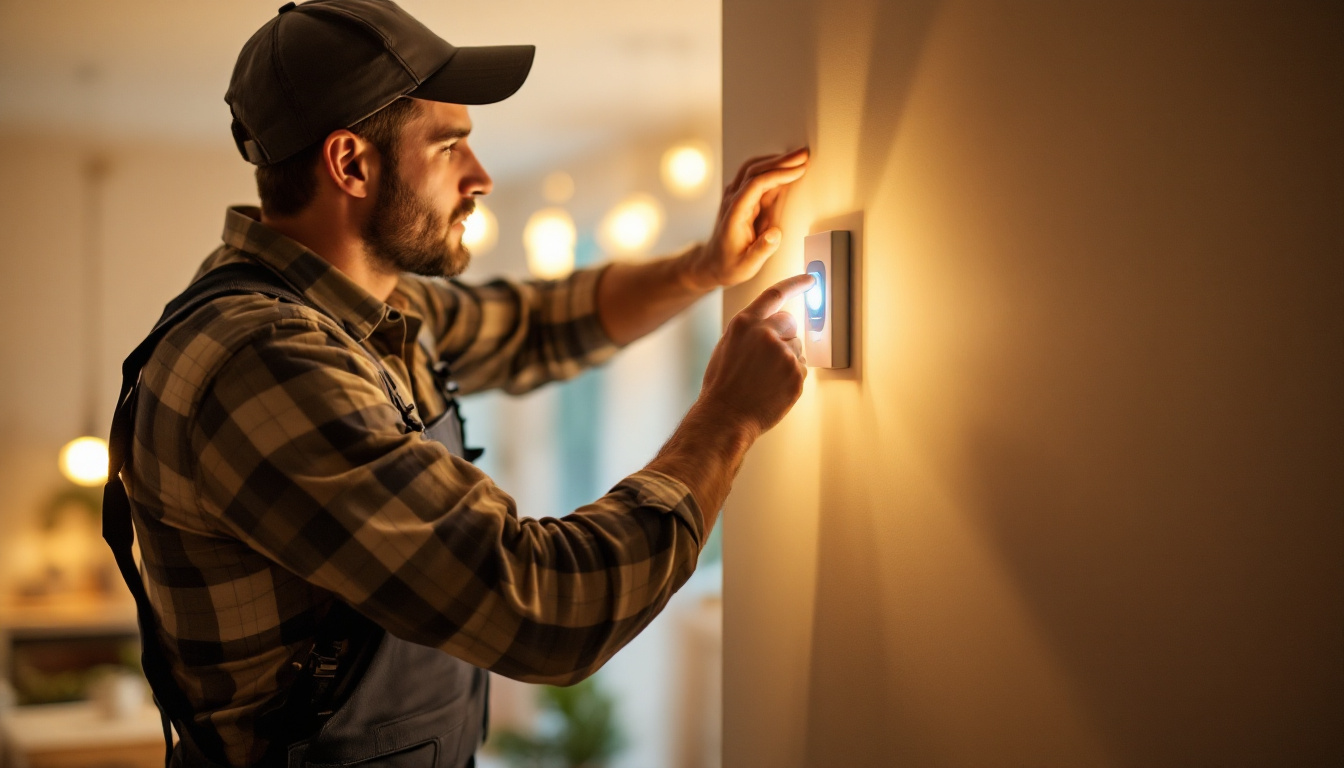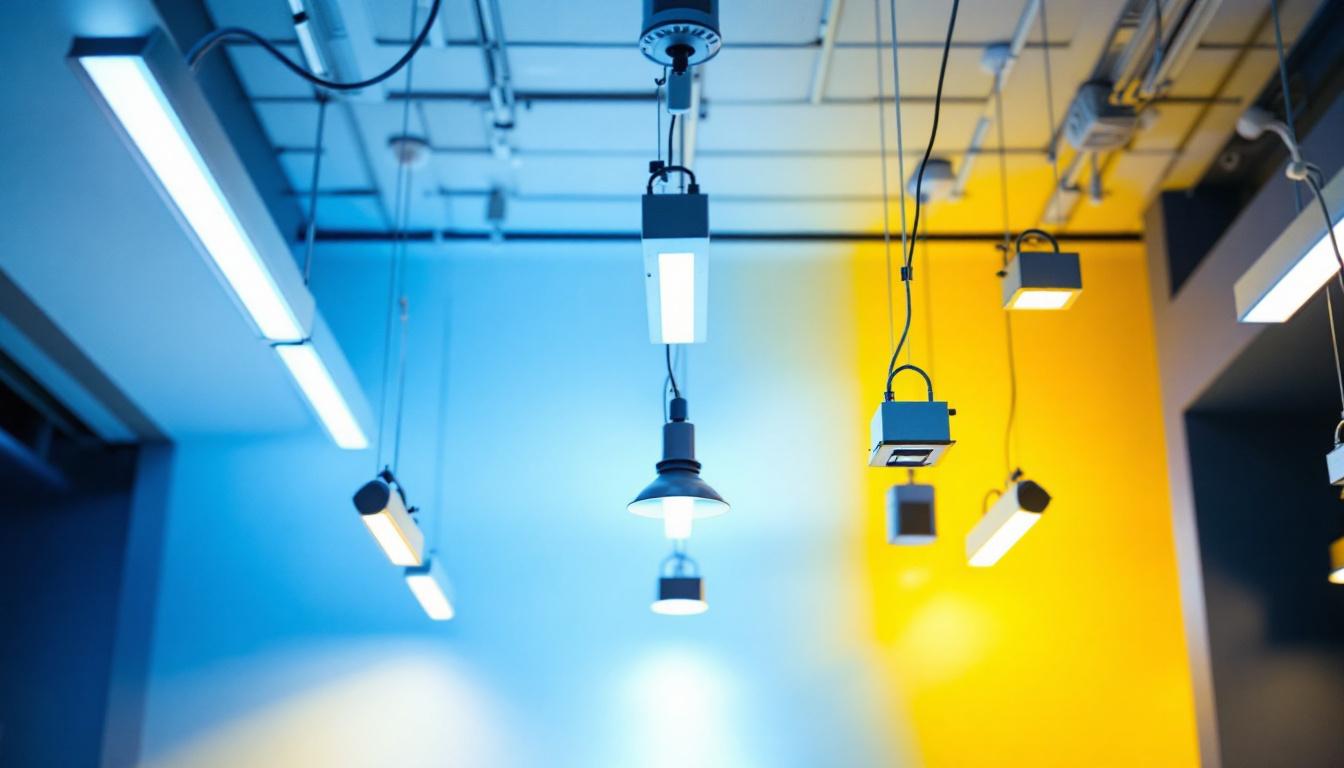
In the ever-evolving field of lighting design and installation, the integration of technology has become paramount. Among these advancements, light switch motion sensors stand out as a practical solution that enhances energy efficiency and convenience. For lighting contractors, understanding the nuances of these devices is essential for successful installations and satisfied clients. This article provides a comprehensive checklist tailored for lighting contractors to ensure effective implementation of light switch motion sensors.
Before diving into the checklist, it is crucial to grasp the fundamentals of light switch motion sensors. These devices detect motion within a specified range and automatically turn lights on or off, providing both convenience and energy savings. They are particularly useful in areas with high foot traffic, such as hallways, restrooms, and entryways. The technology behind these sensors has evolved significantly, making them more reliable and efficient than ever before. With advancements in smart technology, many motion sensors can now integrate with home automation systems, allowing users to control lighting remotely or set specific schedules for when lights should be activated.
There are several types of motion sensors available, each with its unique features and applications. The most common types include passive infrared (PIR), ultrasonic, and dual-technology sensors. Understanding the differences among these types is essential for selecting the appropriate sensor for a specific installation. PIR sensors detect changes in infrared radiation, making them ideal for indoor applications. Ultrasonic sensors, on the other hand, use sound waves to detect movement, making them suitable for larger spaces. Dual-technology sensors combine both PIR and ultrasonic technologies, providing enhanced accuracy and reducing false triggers.
In addition to these common types, there are also specialized sensors designed for specific environments. For instance, some sensors are designed to work in outdoor settings and are built to withstand various weather conditions. Others may include features such as adjustable sensitivity settings or the ability to detect motion through glass, which can be particularly useful in security applications. Understanding these nuances can help users choose the best sensor for their needs, ensuring optimal performance and reliability.
Incorporating motion sensors into lighting systems offers numerous advantages. Firstly, they significantly reduce energy consumption by ensuring that lights are only on when needed. This not only lowers electricity bills but also contributes to a more sustainable environment. The integration of motion sensors can lead to substantial energy savings over time, especially in commercial settings where lights are often left on unnecessarily. Furthermore, many modern sensors are equipped with ambient light detection, allowing them to adjust their sensitivity based on the amount of natural light available, further enhancing energy efficiency.
Additionally, motion sensors enhance safety and security. By automatically illuminating areas when someone enters, they can deter potential intruders and prevent accidents in poorly lit spaces. For contractors, these benefits translate into a compelling selling point for clients. Beyond safety, the convenience of motion-activated lighting can improve the overall user experience in both residential and commercial properties. For example, in a busy office environment, employees can move freely without fumbling for light switches, leading to increased productivity and a more pleasant atmosphere. As technology continues to advance, the potential applications and benefits of motion sensors are likely to expand even further, making them an essential component of modern lighting solutions.
Before installing light switch motion sensors, several factors must be considered to ensure optimal performance and client satisfaction. This section outlines key pre-installation considerations that every lighting contractor should address.
Every installation begins with a thorough assessment of the space. Factors such as the layout, foot traffic patterns, and existing lighting conditions play a crucial role in determining the best placement for motion sensors. High-traffic areas may require multiple sensors to ensure comprehensive coverage, while smaller rooms may only need one.
Moreover, it is essential to consider the height at which the sensors will be mounted. Most motion sensors perform best when installed at a height of 6 to 8 feet, ensuring optimal detection range. Evaluating the space thoroughly will help in making informed decisions regarding sensor placement.
Engaging with clients to understand their preferences and requirements is vital. Some clients may prioritize energy efficiency, while others may focus on aesthetics or ease of use. By discussing these factors upfront, contractors can tailor their recommendations to meet client expectations.
Additionally, understanding the specific needs of the space is essential. For example, a client may require a sensor that can adjust lighting levels based on natural light availability or one that can integrate with existing smart home systems. Taking the time to clarify these requirements can lead to a more successful installation.
Once pre-installation considerations have been addressed, contractors can move on to the installation phase. This checklist outlines the essential steps to ensure a smooth and efficient installation process.
Before beginning the installation, it is crucial to gather all necessary tools and materials. This includes the motion sensors themselves, wiring, electrical tape, screwdrivers, a voltage tester, and a drill. Having everything on hand will streamline the installation process and minimize delays.
Additionally, ensure that the selected motion sensors are compatible with the existing electrical system. Contractors should review the specifications and installation guidelines provided by the manufacturer to avoid any potential issues during installation.
Safety should always be the top priority during any electrical installation. Before starting work, contractors must turn off the power to the circuit where the motion sensor will be installed. Using a voltage tester to confirm that the power is off is a critical step that should never be overlooked.
Wearing appropriate personal protective equipment (PPE), such as gloves and safety glasses, is also recommended to ensure safety during the installation process. Following safety protocols not only protects the contractor but also instills confidence in clients regarding the quality of the work being performed.
With safety precautions in place, contractors can proceed to install the motion sensor. Begin by mounting the sensor at the predetermined height, ensuring it is securely fastened to the wall or ceiling. Proper alignment is crucial for optimal performance, as misalignment can lead to reduced detection range or false triggers.
Next, connect the wiring according to the manufacturer’s instructions. This typically involves connecting the power supply, load, and ground wires. Once the wiring is complete, double-check all connections to ensure they are secure and correctly configured.
After the installation is complete, conducting thorough testing is essential to ensure the motion sensor operates as intended. This phase allows contractors to identify any issues before handing over the system to the client.
Begin by restoring power to the circuit and testing the motion sensor’s functionality. Walk through the detection area to ensure the lights activate as expected. Pay attention to the sensor’s response time and range, making adjustments if necessary.
It is also advisable to test the sensor under various conditions, such as different lighting levels and movement speeds. This comprehensive testing will help identify any potential issues that may arise in real-world scenarios, ensuring a reliable installation.
Once testing is complete, it is essential to demonstrate the motion sensor’s functionality to the client. Walk them through the features and settings, explaining how to adjust sensitivity, time delays, and other relevant parameters. Providing clear instructions will empower clients to utilize the technology effectively.
Additionally, addressing any questions or concerns the client may have during this demonstration fosters trust and satisfaction. A well-informed client is more likely to appreciate the benefits of the installation and recommend the contractor’s services to others.
Even after a successful installation, ongoing maintenance and troubleshooting are necessary to ensure the longevity and performance of light switch motion sensors. This section outlines essential maintenance practices and common troubleshooting tips.
Encouraging clients to perform regular maintenance on their motion sensors can help prevent issues down the line. This includes periodic cleaning of the sensor lens to remove dust and debris that may obstruct the detection range. Additionally, clients should be advised to check for any obstructions in the sensor’s field of view, such as furniture or decor.
It is also beneficial to remind clients to periodically test the sensors to ensure they are functioning correctly. This proactive approach can help identify any potential issues before they become significant problems, ultimately saving time and money.
In the event of issues with the motion sensor, contractors should be prepared to troubleshoot common problems. One frequent issue is false triggering, which can occur due to environmental factors such as heat sources or moving objects within the sensor’s range. Adjusting the sensor’s sensitivity settings can often resolve this problem.
Another common issue is the sensor failing to activate. This could be due to incorrect wiring, a malfunctioning sensor, or obstructions in the detection area. Contractors should review installation guidelines and perform a thorough inspection to identify the root cause of the issue.
Incorporating light switch motion sensors into lighting installations offers numerous benefits for both contractors and clients. By following a structured checklist that encompasses understanding the technology, pre-installation considerations, installation steps, post-installation testing, and maintenance practices, lighting contractors can ensure successful implementations.
As technology continues to evolve, staying informed about the latest advancements in motion sensor technology will empower contractors to provide the best solutions for their clients. By prioritizing quality installations and ongoing support, contractors can build lasting relationships with clients and enhance their reputation in the industry.
Ready to elevate your lighting installations with the latest in motion sensor technology? Look no further than LumenWholesale for all your lighting needs. We provide contractors with high-quality, specification-grade lighting products at unbeatable wholesale prices. Our extensive selection is designed to meet the highest industry standards, ensuring you get reliable, high-performance lighting for every project. Plus, with free shipping on bulk orders, you can stock up on premium lighting without worrying about hidden fees or compromises. Don’t settle for less—choose LumenWholesale for the perfect blend of quality, affordability, and convenience. Take the next step in enhancing your lighting solutions by visiting Wholesale Lighting at the Best Value today.

Discover the hidden insights of lighting contractors with our guide to light bulb connector types.

Discover the essential guide for lighting contractors on integrating solar panels with lighting systems.

Explore the transformative role of ballast in modern lighting design and installation.

Discover the significance of the 48 fluorescent light fixture for lighting contractors.